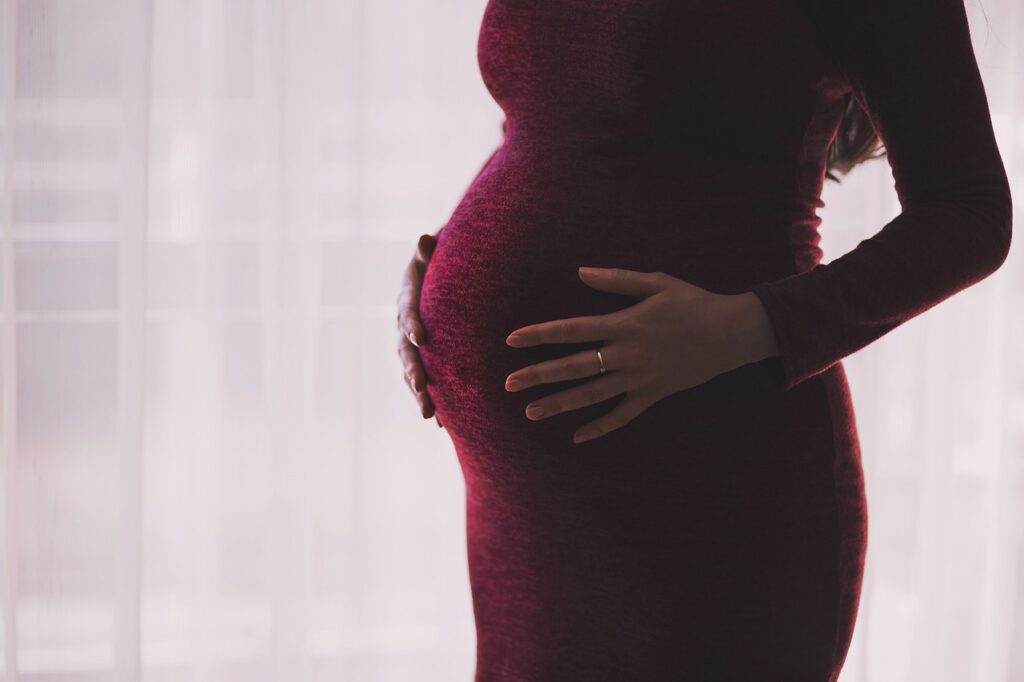By Frances Hand.
Scientific research has recently been published which explains why almost 80% of women experience morning sickness during pregnancy. This study revealed a causal link between foetal production of the hormone GDF15 and nausea and vomiting during pregnancy. It is therefore hoped that, given this new information, more precise mechanisms can now be created to combat these symptoms of pregnancy. Yet, I remain concerned that this scientific discovery, whilst potentially revolutionary from a medical perspective, could have damaging repercussions for the position of pregnant women in practice.
GDF15 Hormone study
Research produced by a collaboration between 5 prestigious universities was published in Nature on 13th December 2023. The data suggested that most individuals already have low levels of GDF15, even when they are not pregnant. However, some women have especially low levels, which make them more sensitive to foetal production of the hormone as it grows. Sometimes, this sensitivity can be so severe that women are hospitalised with Hyperemesis Gravidarum (HG), where nausea and vomiting can threaten the life of both pregnant woman and foetus. HG is the most common cause of admission into hospital of pregnant women in the first three months. Therefore, this scientific discovery could dramatically impact women’s experiences during pregnancy, as this study opens the door for targeted and preventative treatment, such as hormonal priming.
Potential discrimination?
Whilst this could be an important step forward in terms of our understanding of reproductive health, it is also important to consider what legal ramifications this could have, especially for pregnant, working women. The potential for hormonal priming treatment could bring with it a pressure for pregnant women to do everything they can to ensure that the interests of their employer are protected. Evidence suggests that despite strong protective legal frameworks for pregnant women, in practice they continue to face discriminatory and detrimental treatment. It is suggested that this discovery could add further legitimacy to differential treatment based on pregnancy amounting to sex-based discrimination.
The UK has a strong legislative framework to protect women from pregnancy-based discrimination. The Equality Act 2010, section 18 recognises that pregnancy is a protected characteristic. If an employer makes a business decision which detrimentally impacts an employee because of their pregnancy, then this is considered direct sex discrimination. Unlike other areas of discrimination law, case law suggests that an employer is also unable to defend their actions by suggesting that they would have treated someone with a long-term illness the same way they would treat a pregnant woman with HG. Unequal treatment of a pregnant woman is automatically discriminatory.
However, reports suggest that despite this strong legislative framework, women continue to experience workplace pregnancy discrimination. According to the Equality and Human Rights Commission (EHRC), of 3000 mothers in Great Britain, 77% felt that they experienced a negative or possible discriminatory experience at work during pregnancy, maternity leave or upon returning to work. Yet, the cases which actually reach the courts are a very small representation of those who experience workplace discrimination. Indeed, of the 77% of women who experienced detrimental treatment on the grounds of their pregnancy, only 28% raised concerns, 3% took a grievance and less than 1% brought a claim to an employment tribunal.
Moreover, in an atmosphere where 27% of employers believe that pregnancy places an unreasonable cost burden on the workplace, it seems plausible that employers could feel justified to request pregnant women undergo hormonal priming, perhaps even prior to accessing paid leave, if it would help them with the effective running of their business. Equally, more than half of mothers interviewed for the EHRC report suggested that they experienced negative consequences around job opportunities or career progression as a result of having their flexible working request approved. It is questioned whether current sympathy towards women experiencing nausea and vomiting, which might legitimise a request for flexible working, might be diminished if it was suggested that the woman should have undergone hormonal priming.
Conclusion
Ultimately, the discovery of a causal link between GDF15 and pregnancy sickness could be a large breakthrough in female health. However, it will be important that despite this excitement, we continue to uphold pregnant women’s right to choose freely whether or not to accept what could remain for a while yet, an undertested treatment option.
Author: Frances Hand
Affiliation: DPhil candidate at Oxford University
Competing interests: None declared
Social media account: @FrancesHand_
